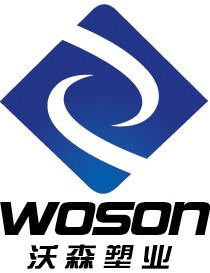Popular Products
Related Information
Precautions for Operating a Plastic Blister Machine
Published Time:
2023-04-11 14:44
(1) The temperature of each section on the barrel of the plastic blister production equipment gradually increases from the feeding section to the connection between the barrel and the molding die.
(2) The temperature of the molding die is slightly higher than the barrel temperature. The temperature difference is controlled at 5-10℃. The temperature at both ends of the mold is slightly higher than the temperature in the middle of the mold, with the temperature difference controlled at 5-10℃.
(3) For the sheet feeding method, the upper surface of the middle roller of the three-roller should be on the same horizontal plane as the lower plane of the mold lip; the end face of the lip is parallel to the center line of the middle roller, with a distance of 50-100mm.
(4) The gap between the mold lips should be slightly smaller than or equal to the thickness of the sheet product; the gap in the middle of the mold lip should be slightly smaller than the gap at the two side ends.
(5) Note that the surface roughness R of the three rollers should not be greater than 0.2μm. When cleaning the roller surface, do not use a hard steel knife to scrape the roller surface; use a copper knife to clean the residual material on the roller surface.
(6) The roller surface should have some medium height; the gap between the three rollers should be equal to or slightly larger than the thickness of the sheet.
(7) The temperature control of the molding die must be stable. When the temperature is high, the speed of the melt flow in the mold increases; when the temperature is low, the speed of the melt flow in the mold decreases. Unstable melt flow rate will cause large longitudinal thickness errors in the sheet products.
(8) Pay attention to controlling the surface temperature of the three rollers. The temperature of the feeding roller should be slightly higher, and the temperature of the discharging roller should be slightly lower. If the roller surface temperature is too high, the slab is not easy to detach from the roller, and transverse lines are easily generated on the surface of the product; if the temperature is too low, the surface of the product is not glossy. Based on this phenomenon, the roller surface temperature control needs to be adjusted in time.
(9) The operating speed of the three rollers should be slightly higher than the extrusion speed of the slab from the die mouth, generally with a speed difference of no more than 10%. The working speed of the three rollers should be kept stable. Too fast or too slow running speed will have a great impact on the thickness error of the sheet.
(10) When extruding polyolefin plastic sheet materials, a sudden change type screw is selected, with a compression ratio of (3-4):1, and the melt flow rate is: HDPE 0.3-2.0g/10min, LDPE 0.1-0.3g/10min, PP 0.5-1.5g/10min. For extrusion molding of sheet materials of non-crystalline polymers such as ABS, a gradual change type screw should be selected, with a compression ratio of (1.6-2.5):1.
(11) For the extrusion molding of plastic sheets, except for polyvinyl chloride, polyethylene, and polypropylene resins, which generally do not require dehumidification treatment before extrusion, other plastics (such as ABS, polyamide, etc.) should be dehumidified and dried before extrusion. Otherwise, a venting extruder should be used for extrusion molding.



